The Motorola Edge 40 has been launched in the Indian market for a price of Rs 29,999, making it part of a heavily crowded but exciting smartphone segment. Xiaomi and Realme both have compelling rival devices but the Motorola Edge 40 does outdo the others in a few aspects. Firstly the Motorola handset marks the debut of the MediaTek Dimensity 8020 chipset. Apart from that, the phone also boasts in an IP68 rating and supports wireless charging, which are features pretty much unheard of in the sub-Rs 30,000 market. So how good is the Edge 40 and is it worthy of your consideration over Realme, Xiaomi, and POCO’s offerings? Let’s find out in this review.
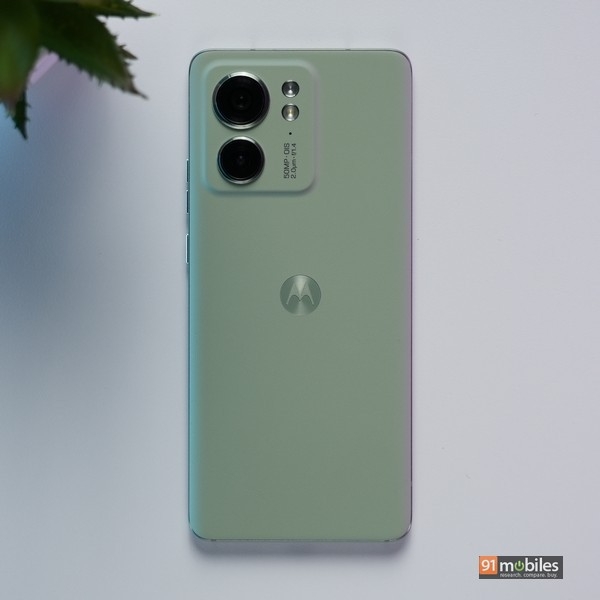
Verdict
The Motorola Edge 40 stands out with its sleek design and impressive features, including an IP68 rating and wireless charging. Despite minor drawbacks including heating and less-than-ideal battery life, it’s a strong contender in the mid-range segment.
Design and display
Motorola Edge smartphones have adopted slim profiles and narrow designs over their past few iterations. The Motorola Edge 40 takes up on this and refines it further with a vegan leather back which is premium to the touch. Very few phones will be able to offer the kind of look being pulled off by the Edge 40 and it decidedly makes the device appear more expensive than it actually is. Also as mentioned above, the phone has an IP68 rating making it highly durable against water and dust. Motorola claims that the Edge 40 is the thinnest phone from its stable with this rating at just 7.6mm of thickness. I have the Nebula Green colour variant which adds to the device’s visual appeal. The phone has a dual-camera setup on the back arranged vertically and a dual LED flash setup on the side. Finally the phone packs in Dolby Atmos-powered stereo speaker setup and a USB Type-C port at the bottom. With its highly lightweight in-hand feel, premium finish, and durability certifications, the Motorola Edge 40 is clearly a winner in the design department.
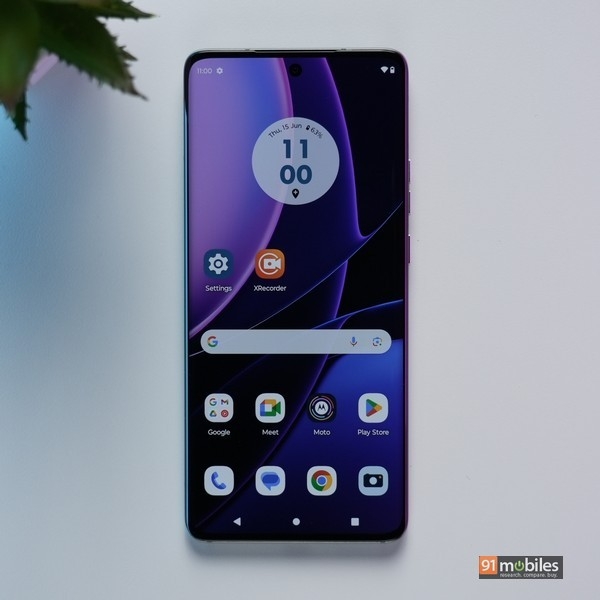
The phone packs in a curved 6.5-inch 144Hz pOLED panel with FHD+ resolution and a 20:9 aspect ratio. Its viewing experience is top-notch thanks to a rather expansive viewing area and an 8-bit panel that can showcase 100 percent of the DCI-P3 colour gamut. There’s also HDR10 support available and it works on OTT platforms like Netflix. I did catch a few episodes of Our Universe on the streaming service and the Edge 40 replicated the visuals in astonishing detail. As far as brightness levels are concerned the screen has a maximum luminosity of 1,200nits, more than enough for comfortable outdoor usage. Finally, the curved screen makes for infinitesimal bezels on all sides and the selfie shooter is housed in a rather unobtrusive punch-hole up top. In all likeliness, the silky smooth and vibrant screen on the Edge 40 will find appreciation from pretty much everyone.
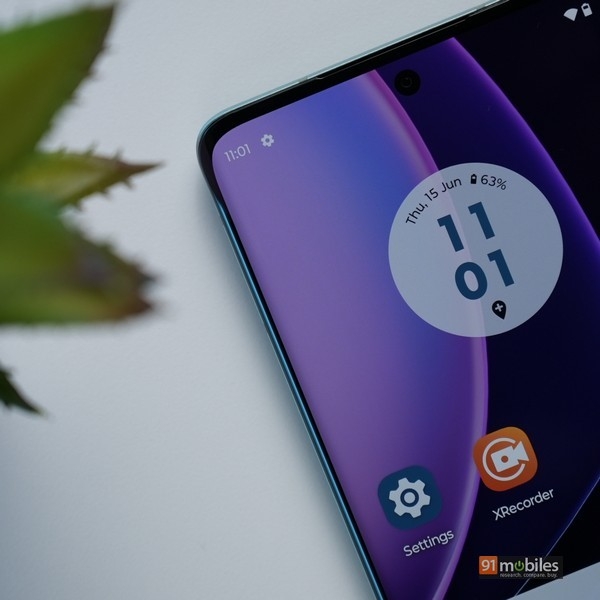
Cameras
As far as optics are concerned, the phone comes with a 50MP OmniVision OV50A sensor and a 13MP ultra-wide shooter. On the front is a 32MP selfie camera which is also an OmniVision lens. In short, the Edge 40 snaps reasonably good photos that are rich in detail and offer a wide dynamic range, expected in this price range. The default resolution is 12.5MP which combines four pixels into one for greater clarity although there is also a full resolution 50MP option as well. Apart from that I quite like the sensor’s quick autofocus and shutter speeds for capturing fast-moving objects. Exposure levels are metered and can be manually adjusted to your satisfaction in the viewfinder. In terms of the colours, saturation levels remain a tad bit high but the overall tonality of most scenes can be considered neutral. For example, if the sky has a heightened shade of blue then the flora just below has controlled colours.
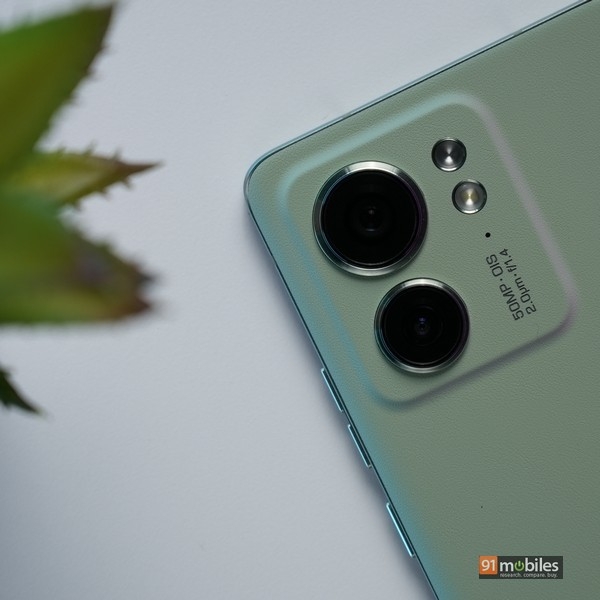
The 13MP ultra-wide camera has a 120-degree field of view which can be considered quite wide and indeed it captures much more of a scene than the primary shooter. What I like here is that there is minimal distortion at the edges and the focus is spread evenly across the frame. You can also snap close-up macro images from the sensor which utilises the sensor’s higher resolution for better detailing than any of the commonly used standalone 2MP lenses. As for portrait shots, it uses some computational chops to separate the subject from the background, but more often than not it does a less than stellar job of it.
In terms of the camera’s low-light capabilities, it can churn out nice images, though that might need a couple of attempts. The standard point-and-shoot experience can be considered a hit or miss depending on much ambient lighting is present. However, once you learn to adjust the exposure and hold the focus, the snaps become much better. You can also use the dedicated Night Mode to de-noise a scene without overprocessing the details. The phone’s low-light capabilities are decent enough but a bit more software tweaking can make it a stellar choice. Lastly, you get the selfie shooter which can snap 32MP shots that fall prey to facial oversharpening but maintain a healthy dynamic range behind my face.
Performance and software
The Motorola Edge 40 comes with the MediaTek Dimensity 8020 SoC, which is a shade lower in performance metrics than the 8100, released last year. At times the handset’s thin design restricts its thermal envelope leading to some throttling. The phone does bang in good scores on benchmarking platforms with Antutu showing a result of 714,606 and Geekbench 6’s multi-core test outputting 3,677. Despite this, the Edge 40 has a tendency to heat up a bit during strenuous tasks. All this to say your regular smartphone usage remains unaffected but something like playing BGMI for long periods of time at Extreme 60fps settings will burn through the battery rapidly while also introducing a bit of lag. The phone comes in a single 8GB LPDDR4X RAM and 256GB UFS 3.1 storage variant.
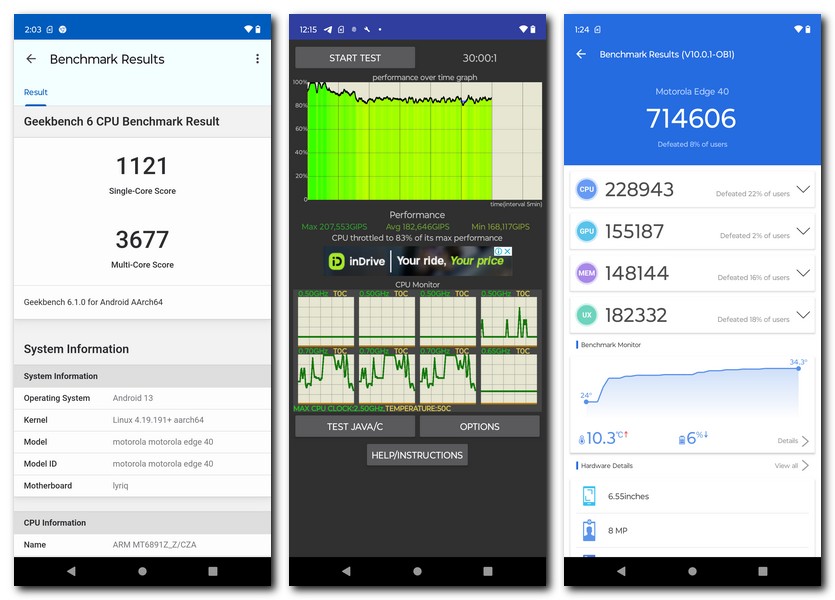
For authentication, the device has an in-display fingerprint sensor of the optical variety. It does a snappy job of registering but can sometimes falter when actually put to use for unlocking the phone. In that regard, I found the facial unlocking much quicker although it will not be as secure. The speakers on the device are actually quite good and the Dolby Atmos support adds to the clarity and depth in the sound. As for network support, the Edge 40 supports most of the popular SA and NSA 5G bands on offer, and my experience with Jio on Noida’s circle was acceptable enough.
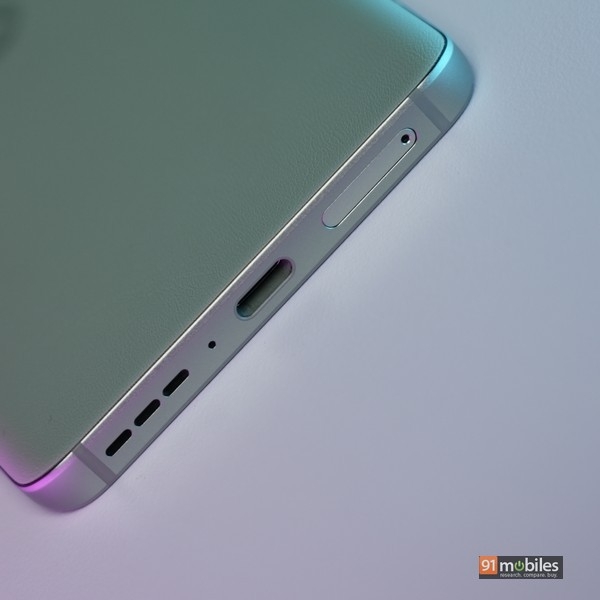
On the software side of things, the Edge 40 has Motorola’s proprietary MyUX skin running on top of Android 13. Its speciality is its mostly clean outlook, no bloatware, and long-standing support for future Android updates. The skin’s lightweight nature allows you to run a host of custom ROMs that will fine-tune the UI to your liking. Apart from that Motorola is keeping its gesture-based inputs on the Edge 40 and they include double-tapping the back or twisting the phone twice or even shaking it hard to access different functionalities.
Battery
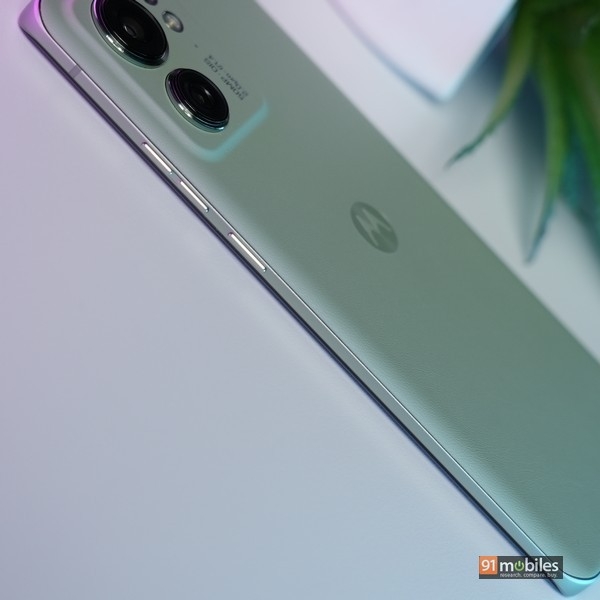
The Edge 40 packs in a 4,400mAh cell which is certainly a feat given the phone’s super slim dimensions. While its capacity is more than the Edge 30, compared to some traditional 5,000mAh offerings from Realme or Xiaomi, the Edge 40 can seem a bit lacking. The device has a screen-on time of around 5 hours, which can be pushed to about six hours on moderate usage. I would call it just about acceptable, although you do have 68W charging that can juice up the phone in less than an hour. Impressively the phone also does 15W wireless charging which adds a bit of convenience.
Final verdict
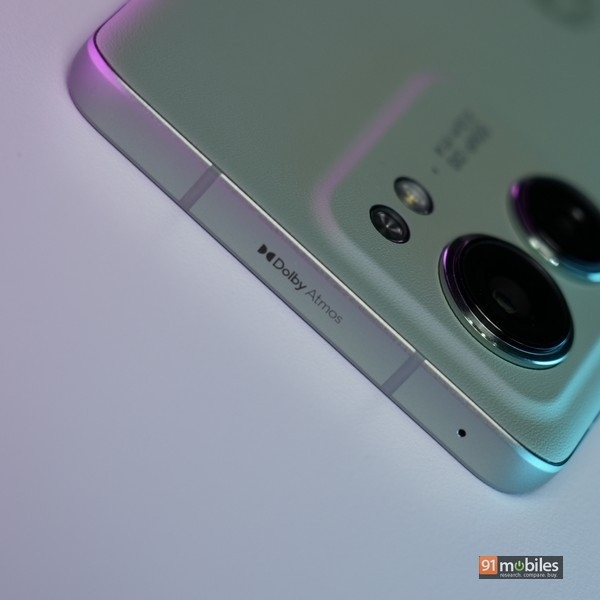
The Motorola Edge 40 is one of the slickest phones in its segment and its exterior appearance can be reason enough to purchase the handset. Barring the Realme 11 Pro series, no phone is even close to touching the Edge 40’s physical elegance. Apart from that the device doesn’t shy away in the display, software, and durability department as well. Good luck finding a device that has IP68 rating, wireless charging capabilities, and one of the cleanest UIs for under Rs 30,000. However, no phone is without compromise and I do wish that the phone could curtail its heating issues and offer a slightly better battery life. Even so, if you are to look past these niggles, the Motorola Edge 40 gets my nod as a compelling offering in the mid-range segment.
Editor’s rating: 4 / 5
Reasons to buy:
- The Motorola Edge 40 comes with an exceptionally thin, light, and premium design
- MyUX is one of the cleanest interface currently on any smartphone
- Has IP68 water and dust resistance
- The 144Hz pOLED curved panel is remarkable for viewing content
Reasons not to buy:
- The rather thin chassis on the phone can sometimes lead to overheating
- With a 4,400mAh cell, the Edge 40 falls short of its competitors in terms of battery life
The post Motorola Edge 40 review: stylish and premium, yet quite affordable first appeared on 91mobiles.com.
0 Comments